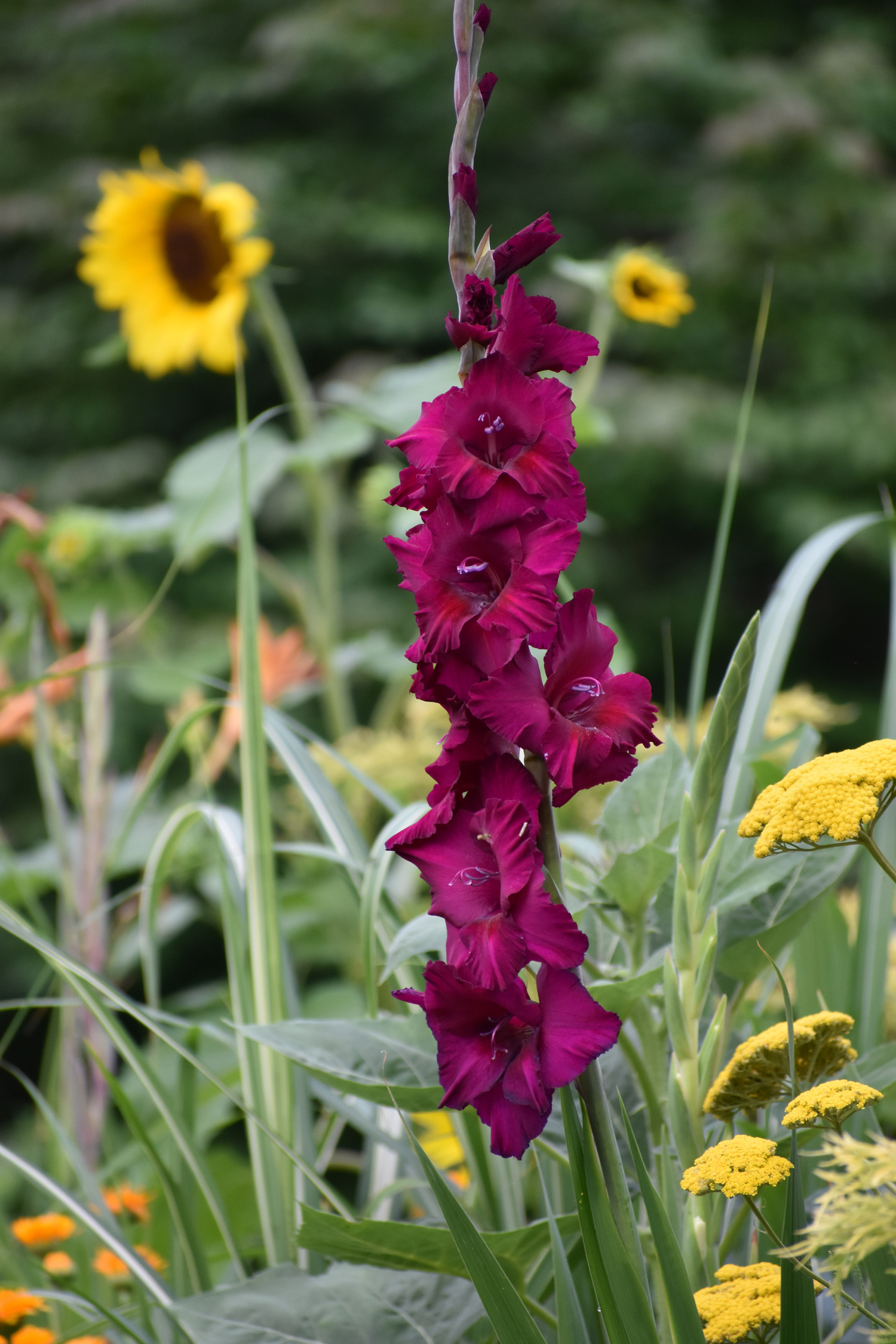What's Old is New Again
Flowers wax and wane in popularity. Many years ago, carnations, hyacinths and geraniums topped the charts. These days, people are crazy for dahlias and ranunculus. Gladiolas, not so much. This is understandable. There’s nothing subtle about these summer-blooming bulbs and it's easy for them to appear awkward in the garden and well as in a vase.

But gladiolas are so much cooler than most people think they are. First off, these are seriously beautiful flowers with stunning, orchid-like blooms. Today's glads have enormous blossoms, often with lots of fancy ruffles. And they are available in so many incredible colors! Traditionally, glads came in red, orange, yellow, purple or white. Now you can choose from a much broader range of single colors that are more subtle and modern. Instead of bright red, you can grow maroon or mauve. If you aren't a fan of electric orange, you can choose peach or apricot. Instead of chrome yellow, you can plant a buttery cream. In addition to single colors, there are bi-colors and even tri-colors.

Glads are also among the easiest and most inexpensive flowers you can plant. Growing them is practically foolproof. Choose a spot with full sun and well-draining soil, plant the corms after all danger of frost has passed, and walk away. Come back 90 days later to start harvesting the waist-high stems. How many flowers can you say that about? But wait, there's more! If you sow a few dozen gladiolus corms every two weeks from late spring through early summer, you can harvest a succession of blooms right through the fall.

Old Friends with an Irresistible Charm
There's something delightfully nostalgic about glads. These late summer flowers are in bloom when the angle of the sun is getting lower and the days are getting shorter. Late summer is also a time to savor and appreciate the garden's abundance. Armloads of freshly-cut glads are right in tune with bushels of corn and tomatoes, back to school shopping and the state fair.

Getting Creative with Glads
Gladiola can appear stiff and dated, especially when they are fanned out in a big funeral arrangement or stuck in a bucket like 4-foot swords. This needn’t be the case. With a little creativity, glads can be transformed into flowers with movement, intrigue and artistry. Here are 5 ways to begin discovering the more creative side of glads:
Wire them. Remove individual flowers and put a hairpin wire through the middle as you would through a strawflower. A single wired gladiola bloom is breathtaking in a wedding bouquet, boutonniere or hairpiece. Want to change the look even more? Wire on foliage from a different flower. People will be asking what flower that is and will certainly be surprised when you tell them it’s a gladiola.
Float them. Pluck off individual flowers and float them in water with some floating candles. Instantly, you have a romantic centerpiece that costs less than a cup of coffee.
Shorten them. Cut off the top of the gladiola spike, leaving only three or four flowers. This gives you a shorter, more workable stem without the "sword-like" feel.
Tube them. Put one or more florets into a water tube. Add foliage from other plants such as roses or even boxwood and wire them all together. Use them with abandon in a compote or urn arrangement.
Embrace their full, ginormous glory! If you combine a bunch of glads in bright, primary colors with liatris, Oriental lilies and leather leaf fern, the look is bound to be dated. Instead, put a half-dozen lavender-blue glads or peach glads in an antique vase for an unforgettable statement piece. Or combine dusky rose glads with pink-kissed hydrangeas and burgundy amaranth (as shown in the photo above).

To Grow Gladiolus is to Love Them
If you have yet to come under the gladiolus' spell and still need some convincing, check out the creative ways that glads are being used by two gladiolus-loving floral designers on Instagram: Kiana Underwood and Antonio Valente.
Hopefully you'll decide to give glads a try in your garden this summer. Plant the corms anytime from May through June, and you'll have flowers blooming just 90 days later. We offer a nice selection of glads for spring planting, which you can see HERE. To learn more about growing glads, you may want to read All About Gladiolus. Also, be sure to check out this video about planting and harvesting glads.

